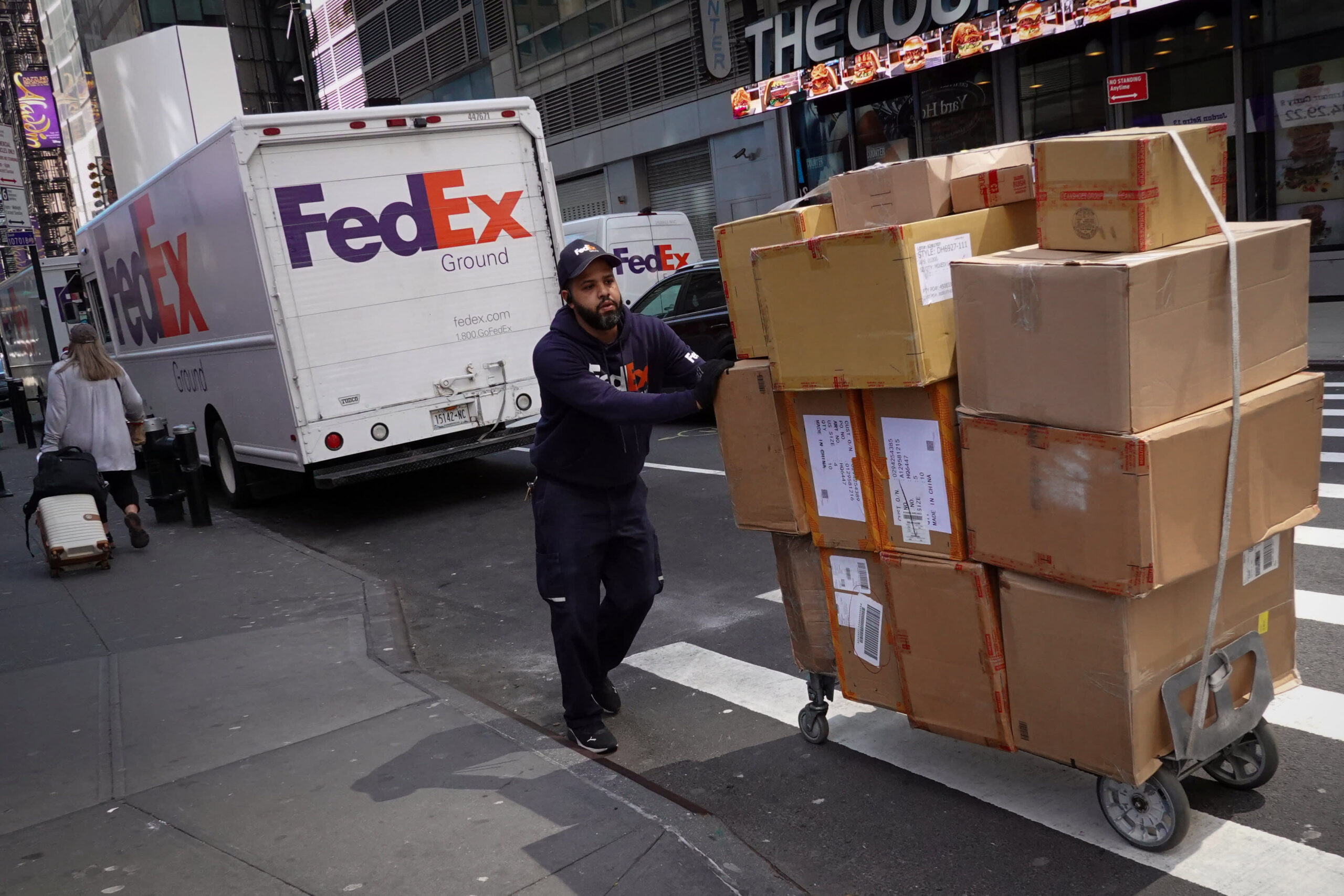After years of unbridled consumer spending on everything from home improvement to dream vacations, some companies are now finding the limits of their pricing power.
Shipping giant FedExSouthwest discounted off-peak fares in the fall. The likes of TargetGeneral Mills
It’s a shift from the recent years when consumers spent at a breakneck pace — and at high prices — lifting corporate revenues to new records. But faced with weakening demand, more price-sensitive consumers, easing inflation and better supply, some sectors are now forced to find profit growth without the tailwind of price hikes.
The answer across industries has been to cut costs, whether it’s through layoffs or buyouts, or simply becoming more efficient. Executives have spent the past several weeks selling these cost-cutting plans to Wall Street.
Nikecut costs by $2 billion over the next three years. Companies including Spirit AirlinesHasbro
“I think companies are better at controlling costs than maintaining pricing power,” said David Kelly, chief global strategist at J.P. Morgan Asset Management.
“Goods companies don’t have the pricing power they did in the pandemic, and some in the hotel and travel [industries] — they don’t have the pricing power they did in the immediate post-Covid,” he added.
Sales growth for companies in the S&P 500
“Companies are extraordinarily committed to maintaining margins,” said Kelly.
FedEx, for example, despite its weaker sales forecast, maintained adjusted earnings outlook for its fiscal year that ends May 31. The company announced cost-cutting measures last year.
Sector shifts
Consumer spending has largely been resilient, but growth is slowing.
The Mastercard
The drag isn’t felt equally across industries.
According to the Mastercard survey, restaurant spending rose 7.8% during the holiday period, outpacing overall gains. Executives at Starbuckspricier drinks, fueling sales and profits.
Consumer spending on apparel and groceries rose 2.4% and 2.1%, respectively, from the year-earlier period, according to the survey. Spending on jewelry, however, fell 2.4% and spending on electronics dropped 0.4%, the report showed.
Airline executives have touted robust demand through the summer as travel rebounds from pandemic halts, but fares are dropping from 2022, when capacity was constrained by staffing shortages and aircraft delays. The latest inflation report from the U.S. Department of Labor showed airfare declined 12% in November from a year earlier.
Southwest Airlines CEO Bob Jordan told CNBC on the sidelines of an industry event in New York earlier this month that the carrier’s fares are still up from last year, despite some discounting during off-peak travel times. The carrier has trimmed its capacity growth plans for 2024 and plans to utilize aircraft more during higher demand periods.
“The capacity changes next year are all about getting the network optimized to match the new demand patterns,” Jordan said. “In some cases, the peak and trough [of demand] are farther apart.”
Automakers are also losing their pricing power following years of resilient demand and low supplies of new vehicles that led to record North American profits for Detroit automakers as well as foreign-based companies such as Toyota Motor
Average transaction prices of new vehicles climbed from less than $38,000 in January 2020 to more than $50,000 at the start of 2023 — an unprecedented 32% increase over that time. Prices remain elevated but were down more than 3.5% through October to roughly $47,936, according to the most recent data from Cox Automotive.
“The consumer is definitely pushing back,” said Ohsung Kwon, an equities strategist at Bank of America, referring to some prices.
“But we think the consumer is healthy,” he continued. “The balance sheet of the consumer still looks phenomenal.”
Spending hangover
There is plenty to cheer about the state of the U.S. consumer — the job market is still strong, unemployment is low and spending has been resilient.
But consumers have also tapped into their savings and racked up credit card debt, with balances reaching a record $1.08 trillion at the end of the third quarter, according to the New York Federal Reserve. Credit card delinquency rates are above pre-pandemic levels.
Those dynamics have some consumers pulling back on expenses at a time when companies had already been grappling with spending shifts as pandemic fears eased. Consumers that had spent heavily during Covid lockdowns on things such as home improvement supplies shifted their money to services such as travel and restaurants when restrictions lifted.
While airlines, many retailers and others have forecast a strong holiday season, the question remains whether consumers will continue their spending habits in the coming months, which are typically a low season for shopping and travel, especially as they pay off their recent purchases. That could mean a challenging period for companies to push price increases on consumers.
Even if companies can’t raise prices and if sales growth is muted, analysts are still upbeat about earnings next year.
FactSet data shows analysts expect a 6.6% increase in earnings of S&P 500 companies in the first quarter of 2024 from a year earlier. They forecast a sales increase of 4.4%. Both growth metrics would mark an annual improvement and quarter-on-quarter improvement. Net margins are expected to expand 11.8%.
Bank of America’s Kwon said he expects earnings to improve even if U.S. economic growth slows due in part to company strategy shifts.
“Companies are really focusing on what they can cut,” he said. “Companies have overhired and overbuilt capacity. They’ve stopped doing that.”
— CNBC’s Michael Wayland contributed to this article.
Don’t miss these stories from CNBC PRO:
Official Wall Street outlook: Here’s where strategists see the stock market going in 2024Here’s where to invest $50,000 heading into 2024, according to market prosMorgan Stanley prefers ‘boring’ non-AI tech stocks for 2024. Here are its top global picksBank of America reveals its 4 top biotech picks for 2024 — and gives one 166% upsideCD rates are dropping. Here’s where to find the highest payouts










